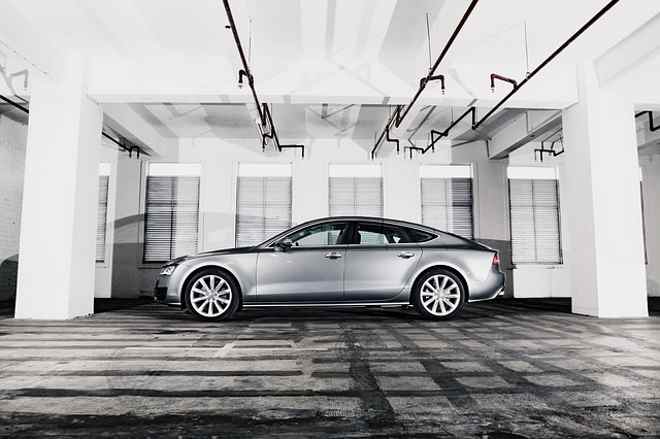Reinventing the Wheel: The Rise of Airless Tire Technology
Rolling into the future of automotive innovation, airless tire technology is poised to revolutionize the way we think about one of the most fundamental components of our vehicles. This groundbreaking development promises to address longstanding issues with traditional pneumatic tires while opening up new possibilities for vehicle design and performance. As we explore this emerging technology, we'll delve into its potential to reshape the automotive landscape and consider the challenges that lie ahead on the road to widespread adoption.

The concept of airless tires dates back to the early 20th century, but recent advancements in materials science and manufacturing techniques have brought this technology to the forefront of automotive engineering. Major tire manufacturers and automotive companies have invested heavily in research and development, recognizing the potential to create a safer, more durable, and environmentally friendly alternative to traditional tires.
Engineering Marvels: The Structure of Airless Tires
At the heart of airless tire technology lies a sophisticated internal structure that mimics the function of air pressure in conventional tires. This structure typically consists of a series of flexible spokes or a honeycomb-like lattice made from advanced composite materials. These components are designed to flex and absorb impacts while maintaining the tire’s overall shape and load-bearing capacity.
The outer layer of an airless tire is composed of a tread band similar to that found on traditional tires, providing the necessary grip and traction for various road conditions. However, the absence of a pressurized air chamber allows for greater design flexibility, potentially leading to improved performance characteristics and even customizable tread patterns for specific driving conditions.
Durability and Sustainability: A Green Revolution
One of the most significant advantages of airless tire technology is its potential to dramatically reduce waste in the automotive industry. Traditional tires are prone to punctures, blowouts, and gradual air loss, leading to premature replacement and contributing to the millions of tires discarded annually. Airless tires, by eliminating these vulnerabilities, promise extended lifespans and reduced material waste.
Furthermore, the design of airless tires allows for easier recycling and reuse of materials. As the tire wears down, only the tread portion needs to be replaced, while the internal structure remains intact. This modular approach not only reduces waste but also simplifies maintenance and potentially lowers long-term costs for vehicle owners.
Performance Under Pressure: Riding on Air(less)
Critics of airless tire technology often question its ability to match the performance of traditional pneumatic tires. However, ongoing research and development have yielded promising results in terms of ride comfort, handling, and fuel efficiency. The unique structure of airless tires allows engineers to fine-tune the tire’s characteristics, potentially surpassing the performance of conventional tires in certain aspects.
One area where airless tires excel is in maintaining consistent performance regardless of temperature or atmospheric conditions. Unlike air-filled tires, which can experience pressure changes due to temperature fluctuations, airless tires maintain their structural integrity across a wide range of environments. This consistency translates to improved safety and reliability, particularly in extreme conditions.
Challenges on the Road Ahead
Despite the numerous advantages of airless tire technology, several hurdles must be overcome before widespread adoption becomes a reality. One of the primary challenges is the current cost of production, which is significantly higher than that of traditional tires. As manufacturing processes improve and economies of scale come into play, this gap is expected to narrow, but it remains a significant barrier to entry for many consumers.
Another concern is the potential for increased road noise and vibration. The unique structure of airless tires can sometimes result in a different ride feel compared to conventional tires, and engineers are working to refine the design to match or exceed the comfort levels of pneumatic tires.
Additionally, regulatory hurdles and industry standards need to be addressed. As a relatively new technology, airless tires must undergo rigorous testing and certification processes to ensure they meet safety and performance standards across various vehicle types and driving conditions.
The Future of Mobility: Beyond the Road
As airless tire technology continues to evolve, its potential applications extend far beyond traditional automobiles. The durability and puncture-resistant nature of these tires make them ideal for use in harsh environments, such as construction sites, mining operations, and even space exploration. NASA has already expressed interest in airless tire technology for future Mars rovers, highlighting the versatility and potential of this innovation.
In the realm of consumer vehicles, airless tires could enable new design possibilities, potentially altering the very shape and function of wheels. Concepts such as shape-shifting tires that adapt to different terrains or integrated sensor systems for real-time performance monitoring are no longer confined to the realm of science fiction.
As we stand on the cusp of this tire revolution, it’s clear that airless technology has the potential to reshape our relationship with one of the most fundamental components of vehicular transport. While challenges remain, the promise of safer, more sustainable, and potentially higher-performing tires is driving innovation forward at an unprecedented pace. The road ahead for airless tire technology is long and winding, but the destination promises a future where flat tires and roadside mishaps may become relics of the past.





